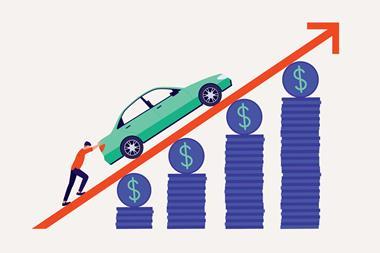Discriminatory pricing is evident in motor insurance premiums – the industry needs to come up with new ways to make this product more accessible and affordable
By Matt Scott
Motor insurance is going through a tough time at the moment. Not only is there the rising cost of premiums, but let’s not forget the recent furore around the higher prices being paid by those living in more ethnically diverse areas.

Sam White, chief executive of Stella Insurance and chair of Freedom Services Group, said on stage at the ABI’s conference on 27 February 2024 that insurance is “inherently discriminatory”, even if that’s not the intention.
And she’s not wrong – insurance is discriminatory and there are currently people in our society who are facing disproportionately higher insurance premiums as a result of that.
This does not mean, however, that insurers are pricing based on ethnicity or any other protected characteristics – and I am certainly not saying that ethnic diversity leads to higher risks.
In this case, the data appears to show a causal link between an area’s ethnic diversity and the price being paid for motor insurance. But in reality, there are other factors at play too.
Realities of discrimination
For a variety of historical and contemporary reasons, more people from black, Asian and other minority ethnic (Bame) backgrounds are likely to be in poverty than white British people.
Meanwhile, a report by think tank Social Market Foundation – published in March 2023 – exploring what it describes as the poverty premium found that “some lower income individuals are considered to face higher or more costly risks than others”, resulting in higher costs of insurance.
This means that while it may appear as if insurers are charging higher premiums due to ethnicity, it is actually due to a myriad of socioeconomic factors.
In mathematical terms, this is known as confounding – where two unrelated factors appear to be related as a result of an unseen third factor.
But, regardless of the causes, this does still present a problem for the industry and its customers. And a pretty serious one, too.
While I don’t think it is realistic, or indeed sensible, for insurers to stop using postcodes or risk locations for setting premiums, a new way of thinking is needed for the industry to steer itself away from this type of discriminatory pricing.
Read: Pricing of motor premiums ’fundamentally discriminatory’
Read: Motor insurance ‘a door shutting in peoples’ faces’
Explore more motor insurance-related content here, or read more news articles here
Possible solutions
In the short term, the insurance industry must do more to help those people in society who are adversely affected by the recent increase in motor premiums.
So-called essentials policies have been touted by some as a solution to the problem of affordability, but I think this has the potential of creating a greater reputational problem down the line.
It also does not represent the fairest solution for consumers.
This is because by taking out features that many would expect to be included as standard, insurers run the risk of consumers still assuming this is still part of the cover and that they are protected.
This would then only serve to widen the expectation gap that has already plagued the industry for a number of years.
Sat on stage alongside White at the ABI conference, Martin Coppack, director of Fair By Design – which supported the Social Market Foundation report – suggested the idea of a baseline policy for the motor insurance industry, with individuals then able to innovate above or below this baseline.
Key to the success of such a concept would be adequate explanation of the differences between policies above and especially below this baseline. Plus, this would not be a model suited to the aggregator distribution channel – at least in its current form.
Modular products are another option I’ve seen floated by a number of people across the industry.
Under this model, consumers would be able to pick and choose the different protections they’d like included in their policy – they are then immediately able to see how that affects the price they pay for cover.
What is clear is that the current model isn’t working for anyone. Motorists are paying increasingly expensive and unaffordable premiums and insurers, by and large, still aren’t making any money.
Whatever solution the industry comes up with, the key aspect is consumer understanding and fairness. Without that, the industry will simply be sleepwalking into even greater problems further down the road.

















































No comments yet